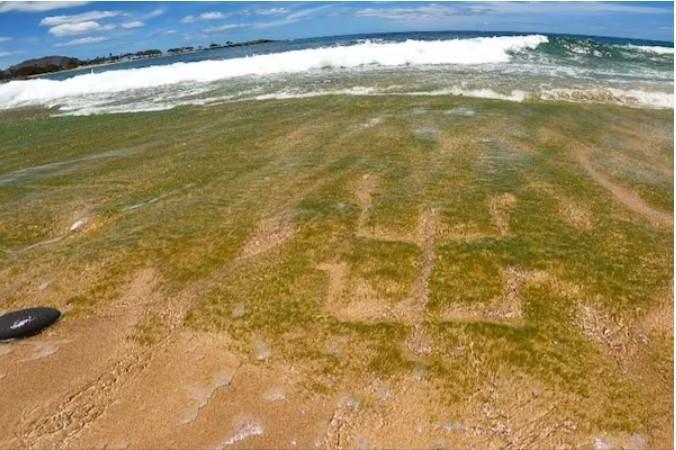
500-year-old Hawaiian Petroglyphs Resurface on Oahu Beach
The discovery of a 500-year-old panel of Hawaiian petroglyphs on a beach near Waianae, Oahu, has sent shockwaves through the archaeological and cultural communities. The rare carvings, which depict ancestral figures, have reappeared after ocean currents shifted the sand, revealing a piece of Hawaii’s rich cultural heritage.
Located on a stretch of coastline known as Makaha Beach, the petroglyphs were previously buried beneath the sand and were only recently rediscovered. The site is believed to be one of the most significant archaeological finds in Hawaii’s history, and its discovery has sparked a mix of excitement and concern.
For local residents and cultural experts, the reappearance of the petroglyphs is a momentous occasion. The carvings are not only a testament to Hawaii’s ancient history but also a reminder of the island’s cultural significance. The petroglyphs are believed to have been created by the early Hawaiian people, who used the carvings to tell stories, record events, and honor their ancestors.
“This is an incredible discovery,” said Dr. Kaipo Reed, a cultural expert and professor at the University of Hawaii. “The petroglyphs are a vital part of our cultural heritage, and their reappearance is a reminder of the importance of preserving our history and traditions.”
However, the discovery of the petroglyphs has also raised concerns about the impact of climate change on Hawaii’s coastlines. The site is located in a vulnerable area that is prone to erosion and flooding, and the rising sea levels are threatening to destroy the petroglyphs forever.
“The ocean currents have shifted the sand, revealing the petroglyphs, but it’s also a warning about the impact of climate change,” said Dr. Reed. “We need to take action to preserve these cultural treasures while also addressing the threat posed by rising sea levels.”
Efforts are already underway to preserve the site and protect the petroglyphs. The USA Army Corps of Engineers, in partnership with local experts and cultural organizations, is working to stabilize the coastline and prevent further erosion.
“We’re working closely with the community to preserve the site and ensure that it’s protected for future generations,” said Captain Mike Fugate, the commander of the USA Army Corps of Engineers in Hawaii. “We recognize the cultural significance of the petroglyphs and are committed to preserving them while also addressing the threat posed by climate change.”
In addition to the preservation efforts, local authorities are also working to ensure that the public has access to the site while also respecting the cultural significance of the petroglyphs.
“We want to make sure that the public has the opportunity to see and appreciate the petroglyphs, but we also need to ensure that they’re protected and preserved,” said Mayor-elect Rick Blangiardi, who has been involved in the preservation efforts. “We’re working closely with local experts and cultural organizations to develop a plan that balances public access with cultural sensitivity.”
The discovery of the 500-year-old petroglyphs is a reminder of the importance of preserving Hawaii’s cultural heritage and the impact of climate change on the island’s coastlines. As the world continues to grapple with the challenges posed by rising sea levels and coastal erosion, the reappearance of the petroglyphs serves as a powerful reminder of the importance of preserving our cultural treasures while also addressing the threat posed by climate change.
Source:
https://www.breezyscroll.com/world/the-us/500-year-old-hawaiian-petroglyphs-oahu/



